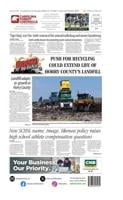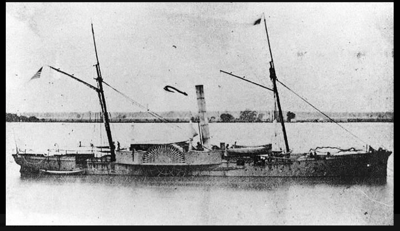Ěý
A United States warship sat off the coast, preparing to launch an amphibious Marine assault against a vital enemy installation.
This scene has played out over and over throughout history and in many parts of the world.
But on April 23, 1864, the warship was the USS Ethan Allen and the target was a massive salt works at Singleton Swash located near what is now the Dunes Club in Myrtle Beach.
The next morning, the ship and its crew moved a couple of miles southward, destroying a smaller salt works at Withers Swash close to what is now the Family Kingdom Amusement Park.
This was a major blow to the salt supply for the Confederate states. And it’s a part of the Grand Strand history that many people have never heard of.
Local historian Ted Gragg said most people don’t realize the Myrtle Beach area and Horry County played a major role in South Carolina’s Civil War efforts.
“Many people think nobody lived around here during the Civil War, but nothing could be further from the truth,” Gragg said. “Many of Horry County’s finest young men went off to serve the Confederacy and some stayed behind for reasons such as supplying much needed salt to the South.”
In a letter to the Secretary of the Navy, the Ethan Allen’s commanding officer J. A. Pennell said he heard of the salt works while his ship was in Murrells Inlet.
Pennell said two escaped slaves that he had on board told of a salt works near Cane Patch, 12 miles north of Murrells Inlet. Gragg said the actual location is what is now called Singleton Swash.
At about 2 p.m. on April 23, Pennell anchored his ship just offshore at the swash. He then led a party of Marines ashore to find and destroy the salt works.
It turns out, Pennell’s prize was much bigger than he had imagined.
“On examination, we found the works much more extensive than I expected,” he wrote. “There were four separate works, each containing 12 large pans, the water being raised from the beach by horse-power, leading into a cistern large enough to contain one hundred thousand gallons, built of timber, planked and caulked on the inside.”
Pennell’s force found 30 buildings, including three warehouses containing 2,000 bushels of salt along with other supplies.
His men destroyed the buildings and the salt pans and then mixed the salt in with the sand on the beach, rendering it unusable.
Some historians think the lake on the 11th hole at The Dunes Club golf course was part of the original salt works complex.
At nine the next morning, the ship sailed south where they found a man waving a white handkerchief behind a house near the beach at Withers Swash. The man told the crew that the house contained a smaller salt works.
Two hours later, that structure had been destroyed and the ship set sail from the Grand Strand coast.
Gragg said the raid by the Ethan Allen was a significant occurrence for the war.
First, salt was a valuable commodity that had become scarce as the war dragged on and second, this was the first time that Marines had ever been deployed in an amphibious assault.








(0) comments
Welcome to the discussion.
Log In
Keep it Clean. Please avoid obscene, vulgar, lewd, racist or sexually-oriented language.
PLEASE TURN OFF YOUR CAPS LOCK.
Don't Threaten. Threats of harming another person will not be tolerated.
Be Truthful. Don't knowingly lie about anyone or anything.
Be Nice. No racism, sexism or any sort of -ism that is degrading to another person.
Be Proactive. Use the 'Report' link on each comment to let us know of abusive posts.
Share with Us. We'd love to hear eyewitness accounts, the history behind an article.